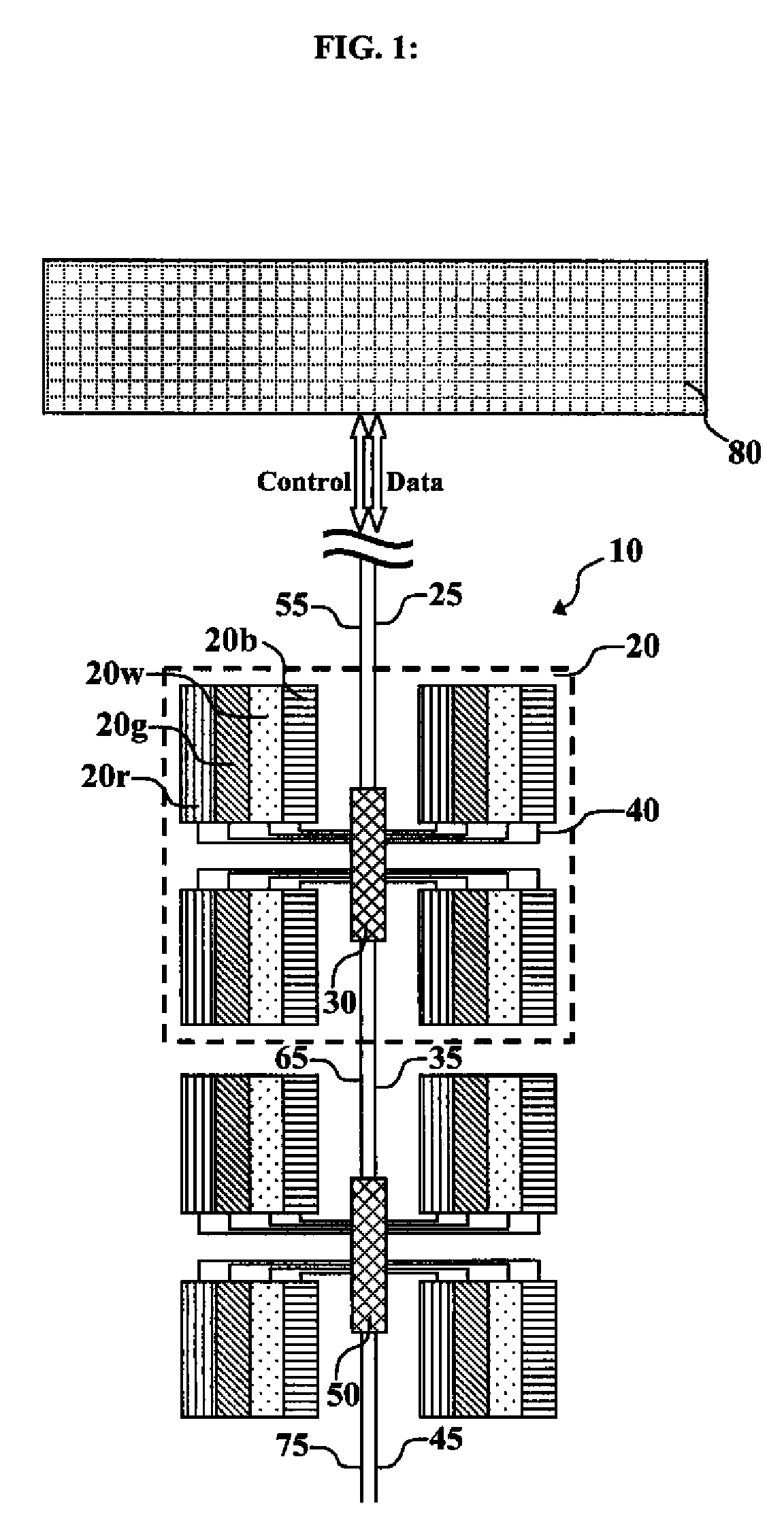Tiled electronic display
a technology of electronic display and tiling, which is applied in the direction of static indicating devices, cathode-ray tube indicators, instruments, etc., can solve the problems of increasing the cost of making a display of this type, increasing the cost of manufacturing, and increasing the complexity of the process, so as to achieve simple and less expensive manufacturing of large electronic displays, the effect of reducing the cost of production
- Summary
- Abstract
- Description
- Claims
- Application Information
AI Technical Summary
Benefits of technology
Problems solved by technology
Method used
Image
Examples
Embodiment Construction
[0028]Turning now to FIG. 1, there is shown a plan view of one embodiment of a display of this invention. Display 10 can represent an entire display or a portion thereof. Display 10 has an emissive image area that causes light emission. The emissive image area that comprises a plurality of light-emitting pixels, e.g. red light-emitting pixels such as 20r, green light-emitting pixels such as 20g, blue light-emitting pixels such as 20b, and white light-emitting pixels such as 20w. The light-emitting pixels can be any form of electronic display, e.g. OLED or LCD, and are not limited to the combinations of colors in this embodiment. The pixels in the emissive area are arranged in groups of pixels, e.g. group of pixels 20. Display 10 includes a plurality of sequentially arranged pixel drive circuits, e.g. pixel drive circuits 30 and 50, and other pixel drive circuits that can be located above pixel drive circuit 30 or below pixel drive circuit 50. The term “sequentially arranged” as used...
PUM
 Login to View More
Login to View More Abstract
Description
Claims
Application Information
 Login to View More
Login to View More - R&D
- Intellectual Property
- Life Sciences
- Materials
- Tech Scout
- Unparalleled Data Quality
- Higher Quality Content
- 60% Fewer Hallucinations
Browse by: Latest US Patents, China's latest patents, Technical Efficacy Thesaurus, Application Domain, Technology Topic, Popular Technical Reports.
© 2025 PatSnap. All rights reserved.Legal|Privacy policy|Modern Slavery Act Transparency Statement|Sitemap|About US| Contact US: help@patsnap.com



